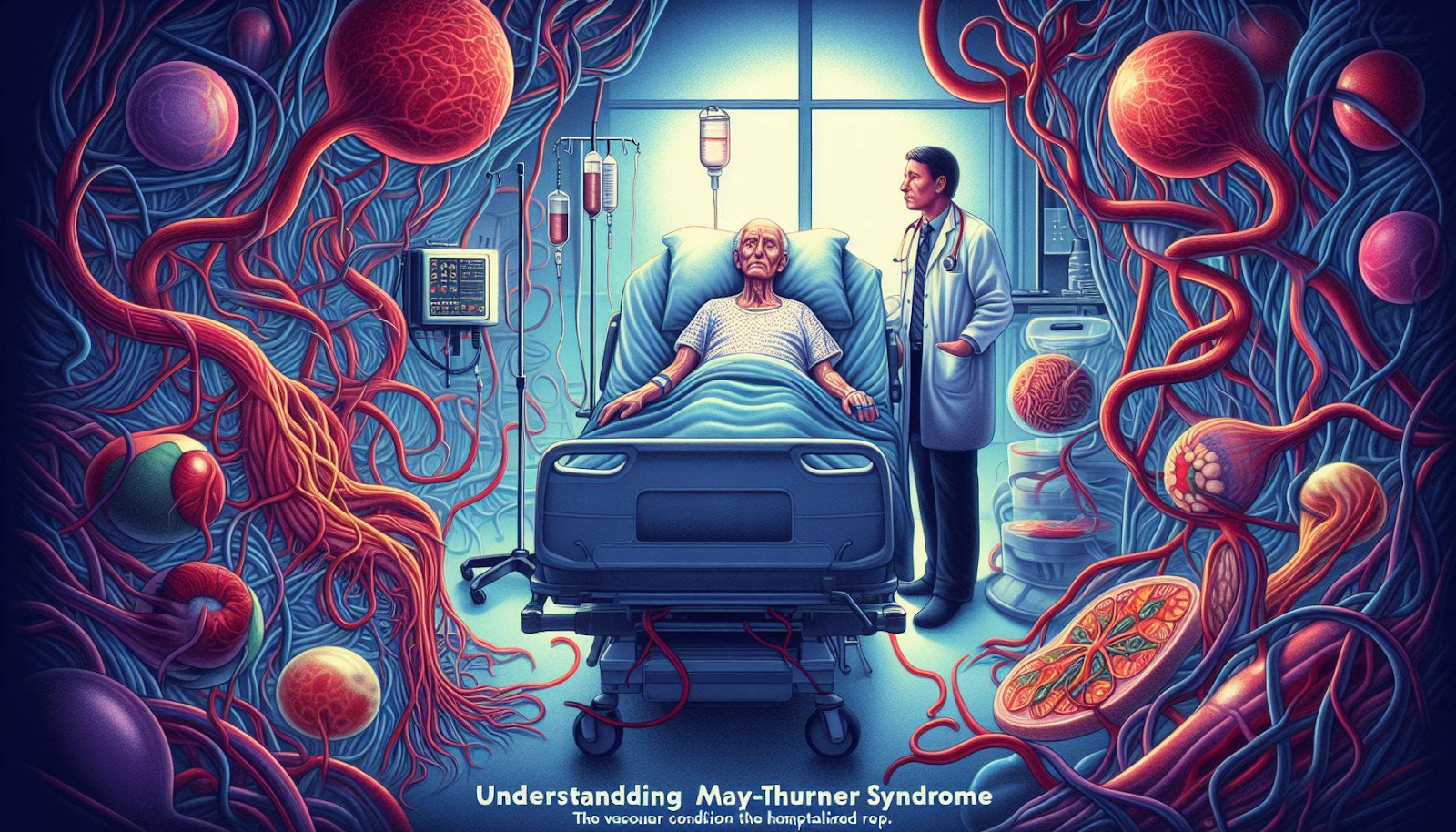Health
Understanding May-Thurner Syndrome: The Vascular Condition That Hospitalized Rep. Boebert

In a recent announcement, Colorado Republican Representative Lauren Boebert revealed that she had been hospitalized due to severe swelling in her left leg. The culprit, according to her doctors, was a condition known as May-Thurner syndrome, a relatively uncommon but potentially serious vascular disorder. Boebert’s case has brought renewed attention to this little-known medical condition, prompting questions about its causes, symptoms, and treatment.
What is May-Thurner Syndrome?
May-Thurner syndrome, also known as iliac vein compression syndrome or Cockett syndrome, is a condition in which the right iliac artery exerts pressure on the left iliac vein, causing a partial obstruction of blood flow. The iliac veins are responsible for carrying deoxygenated blood from the legs back to the heart, and this compression can lead to impaired circulation and the formation of potentially dangerous blood clots.
The syndrome is named after the two physicians who first described it in the 1950s, Dr. Ruben May and Dr. Joseph Thurner. It is a relatively rare condition, with an estimated prevalence of around 20% in the general population, according to a 2012 medical journal publication. However, many cases may go undiagnosed unless a patient experiences symptoms or develops complications, such as deep vein thrombosis (DVT).
Causes and Risk Factors
The primary cause of May-Thurner syndrome is an anatomical abnormality in which the right iliac artery crosses over and compresses the left iliac vein. This compression can occur due to various factors, including the position of the blood vessels, the angle at which they intersect, or the presence of other anatomical variations.
While the exact underlying causes are not fully understood, certain risk factors have been identified:
1. Gender: May-Thurner syndrome is more common in women, possibly due to anatomical differences in the pelvic region.
2. Age: The condition is most frequently diagnosed in adults between the ages of 20 and 50.
3. Pregnancy: The increased blood volume and pressure associated with pregnancy can exacerbate the compression of the iliac vein.
4. Obesity: Excess abdominal fat can contribute to increased pressure on the iliac vein.
5. Prolonged immobility: Prolonged bed rest or extended periods of sitting can increase the risk of blood clots forming in the compressed vein.
Symptoms and Complications
The symptoms of May-Thurner syndrome can vary in severity and may be mistaken for other conditions. Common signs and symptoms include:
1. Swelling or edema in the left leg, often more pronounced after prolonged standing or sitting.
2. Pain, heaviness, or discomfort in the left leg or thigh.
3. Skin discoloration or redness in the affected leg.
4. Formation of varicose veins or ulcers in the affected leg.
If left untreated, May-Thurner syndrome can lead to serious complications, the most concerning of which is the development of deep vein thrombosis (DVT). DVT occurs when a blood clot forms in the compressed iliac vein, potentially leading to life-threatening conditions such as pulmonary embolism if the clot dislodges and travels to the lungs.
Diagnosis and Treatment
Diagnosing May-Thurner syndrome often involves a combination of physical examination, imaging tests, and assessment of the patient’s medical history and risk factors. Common diagnostic methods include:
1. Doppler ultrasound: This non-invasive imaging technique can detect abnormalities in blood flow and identify potential clots or obstructions.
2. Computed tomography (CT) or magnetic resonance (MR) venography: These advanced imaging techniques provide detailed visualizations of the blood vessels and can confirm the presence of iliac vein compression.
3. Intravascular ultrasound (IVUS): This invasive procedure involves inserting a catheter with an ultrasound probe into the affected vein to assess the degree of compression.
Once diagnosed, the treatment approach for May-Thurner syndrome depends on the severity of the condition and the presence of any complications, such as DVT. In some cases, conservative management with compression stockings, anticoagulant medications, and lifestyle modifications may be sufficient.
However, for more severe cases or when DVT is present, interventional procedures may be necessary. These can include:
1. Catheter-directed thrombolysis: This procedure involves administering clot-busting medications directly into the affected vein to dissolve any existing blood clots.
2. Angioplasty and stenting: During this minimally invasive procedure, a balloon catheter is used to widen the compressed vein, and a metal stent is then placed to keep the vein open and improve blood flow.
3. Surgical bypass: In rare cases, surgery may be required to create an alternative route for blood flow, bypassing the compressed vein.
In Representative Boebert’s case, her campaign reported that she underwent a procedure to remove a blood clot and had a stent placed to aid in normal blood flow. This approach is consistent with the standard treatment for May-Thurner syndrome complicated by DVT.
Raising Awareness and Prevention
While May-Thurner syndrome is not a household name, Boebert’s experience has brought attention to this often overlooked condition. Increased awareness among healthcare professionals and the general public can lead to earlier detection and more timely intervention, potentially preventing serious complications.
Prevention strategies focus on managing risk factors and promoting healthy lifestyle habits, such as maintaining a healthy weight, exercising regularly, and avoiding prolonged periods of immobility. For individuals at higher risk, such as pregnant women or those undergoing surgery, preventive measures like compression stockings or anticoagulant therapy may be recommended.
By understanding the causes, symptoms, and treatment options for May-Thurner syndrome, individuals can be better equipped to recognize potential warning signs and seek prompt medical attention. Early diagnosis and appropriate management can help prevent long-term complications and ensure a successful recovery, as demonstrated by Representative Boebert’s expected full recovery and ability to continue her duties as a Congresswoman.
